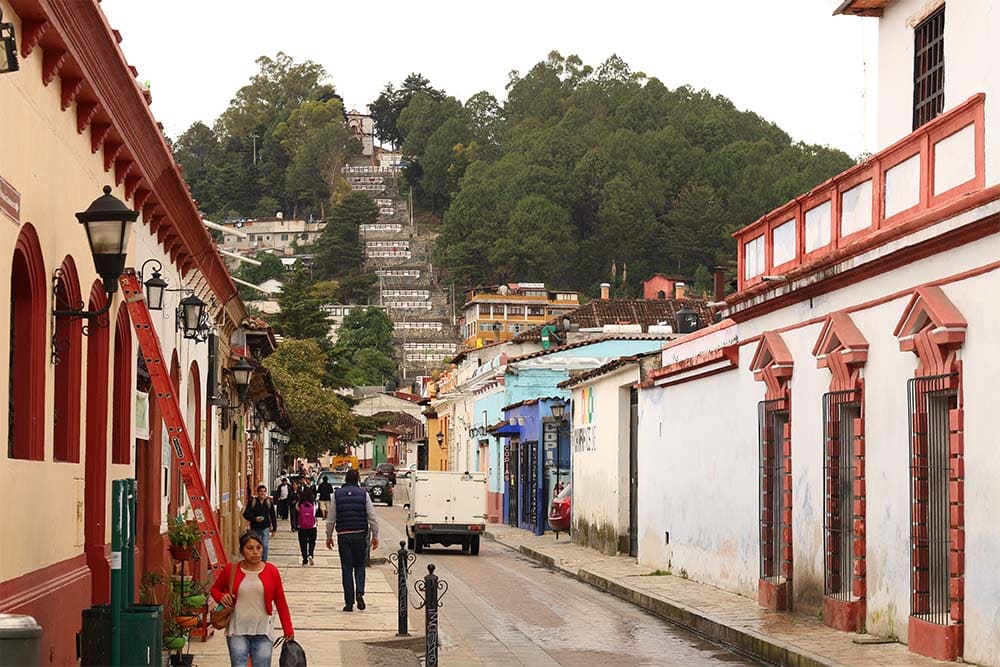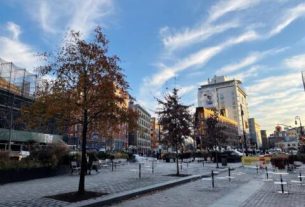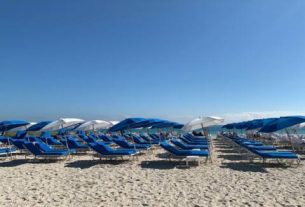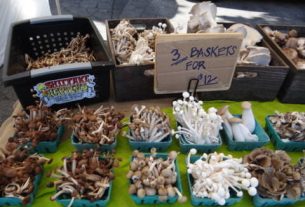The name is San Cristóbal de las Casas, but you can call it San Cris, nice to meet you. The cultural and tourist capital of Chiapas, a state in southern Mexico that borders Guatemala, this historic city is full of churches, good restaurants and colonial mansions. Also add the region’s strong indigenous culture – part of the population doesn’t even speak Spanish –, the peaceful climate and the beauty of the surroundings. Now, you’ll understand why San Cristóbal de las Casas is the kind of place that turns tourists into residents.
With just 180,000 inhabitants, the tourist part of San Cris is small and can be covered in a day or two. Leave your bags at the hotel and dedicate your time to doing the second best thing in the city – walking aimlessly. The first one, well, I’ll tell you what it is later.
Ecclesiastical Walker
As is tradition in Mexico, everything starts at the Zócalo, the central square, which has had eight official names, but ends up being known by its nickname. This is where the Cathedral of San Cristóbal is located, as well as the Government Palace, where the MUSAC is located, one of the most important museums in the city and which tells the history of San Cris and the state of Chiapas. There, in the square and in the museum arches, events and a food and sweets fair usually take place. Behind the museum is Parque de los Arcos. And also in the same area and in front of the Cathedral is Praça da Paz, where there is a cruise and which is full of people, day and night.
This is the center of San Cris. It is from there and there that everything happens – and it is close to this region that you should stay. I stayed three blocks from the Zócalo, at the Hotel Mansion Del Valle, and paid around R$150 for a double room. Other well-located options are Las Escaleras by Inmense and Plaza Gallery Hotel & Boutique.
See too: Where to stay in San Cristóbal de las Casas, Mexico
A paper factory and dreams in San Cristóbal de las Casas
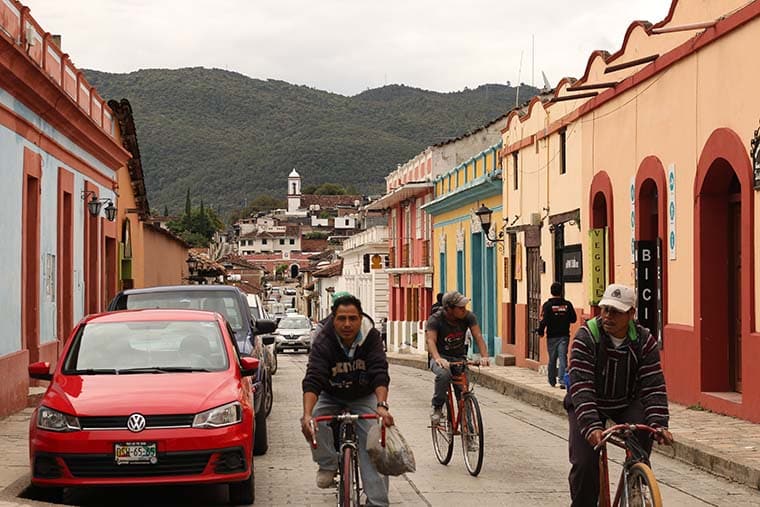
Returning to tourism, one of the coolest parts of San Cristóbal are the pedestrian-only streets, also called tourist walkers. One of the busiest is Calle Real de Guadalupe, which is on the street of the same name and where there are great bars and restaurants.
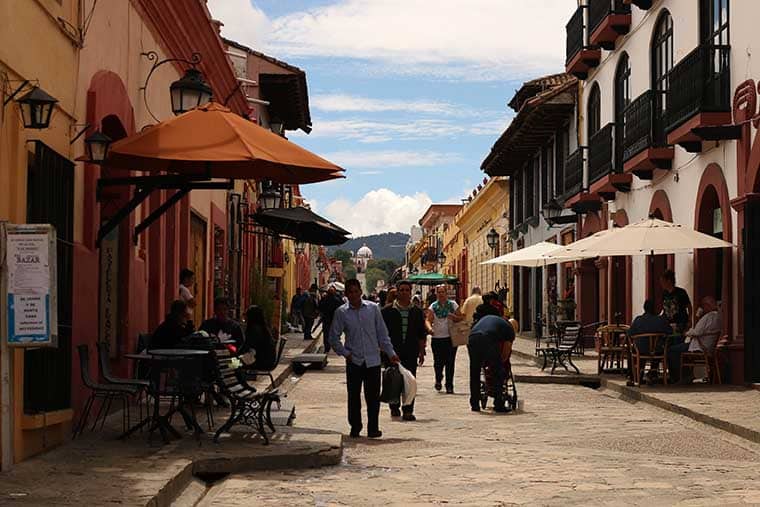
Royal Street of Guadalupe
Follow for seven blocks, until the point where the street receives vehicle traffic again, and you will reach the foot of the stairs that lead to the Church of Guadalupe. It’s worth going up to see the view, especially around sunset.
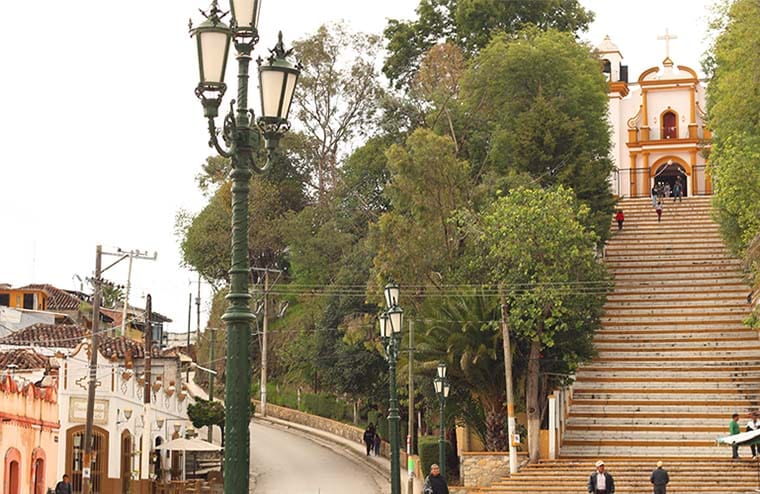
Church of Guadalupe
The other walker is Ecclesiastic, which cuts through the Zócalo and Praça da Paz and involves Miguel Hidalgo and 20 de Novembro streets, for eight blocks. It is on this street that some of the most important tourist attractions in San Cristóbal de las Casas are located, starting with the Cathedral itself and the Government Palace, as the street passes in front of both. And also the Church and Convent of Santo Domingo, probably the most beautiful temple in the city, which has a facade in the baroque style that is typical of this part of Mexico.
There is a great crafts fair in front of this church – we found pillows in the shape of colorful skulls that we had to bring home, even though the purchases were a bit big and complicated to put in our luggage. From this point, going straight along General M. Utrilla street, you will reach the old San Cris market, another interesting stop. You’ll know you’ve arrived by the large movement of people and the street fair opposite. A 10-minute walk away, in the same direction, is the Museum of Maya Medicine, a place that I highly recommended. We even went there, but the place was closed.
Finally, it is from around the Old Market of San Cris that vans leave to take you to San Juan de Chamula, a community that deserves to be visited and where religious ceremonies take place that are a mix of ancient Mayan culture and that of the Spanish conquerors. Expect to spend half a day on this tour.
See too: San Juan Chamula: Mayan rituals in southern Mexico
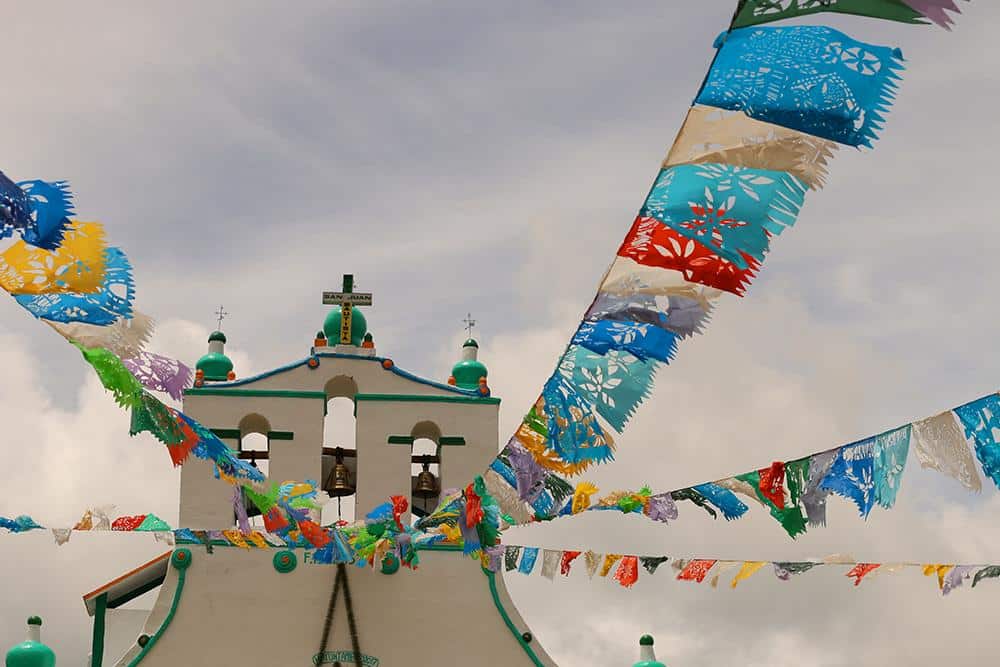
Church of San Juan de Chamula
Back at the Zócalo, take the Andador Ecclesiastico in the opposite direction, in the southern part. The first monument you will see is the Torre del Carmen Church and Arch, built in the 17th century, to serve as one of the city’s gateways and as the bell tower of the church and part of a convent. From there, follow Hermanos Domínguez Street. Soon you will see a staircase with another church at the top, that of San Cristobalito. It is worth going up to admire the view.
Also on this side of the city is the Mercado de Dulces y Artesanias, another interesting point for shopping. And the list of attractions doesn’t end there, of course. San Cris has other churches, for Ouro Preto none of them are faulty: there are more than two dozen temples, and that’s just counting those that are centuries old. If visiting churches is something you like, it’s worth making a checklist.
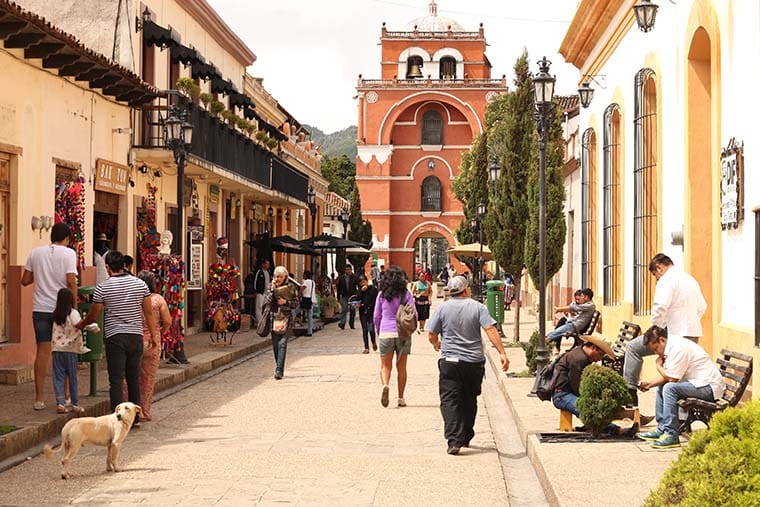
Torre del Carmen Arch
San Cris also has some museums. I confess that I only went to one, Ambar, which is next to the Church of la Merced and a beautiful square with the same name. The museum was worth it because it was a rainy day and we couldn’t do much outdoors. If this is not the case, it is best to enjoy the city outside of four walls. Other museums in the city are Popular Cultures of Chiapas, Jade and Na-Bolom.
Tours in the surrounding area
Almost everyone who passes through San Cris takes the opportunity to take a few day trips. The most traditional is the Cañion del Sumidero, which is an hour from the city and is a great postcard: walls of up to a thousand meters frame the Grijalva River. The region is a national park and tours depart from San Cris and include two or three hours of navigation. Our idea, when we put this part of Mexico on the itinerary, was to visit the Canyon, but bad weather forced us to change our plans. A few months later, Naty took the trip in good weather conditions and wrote about it.
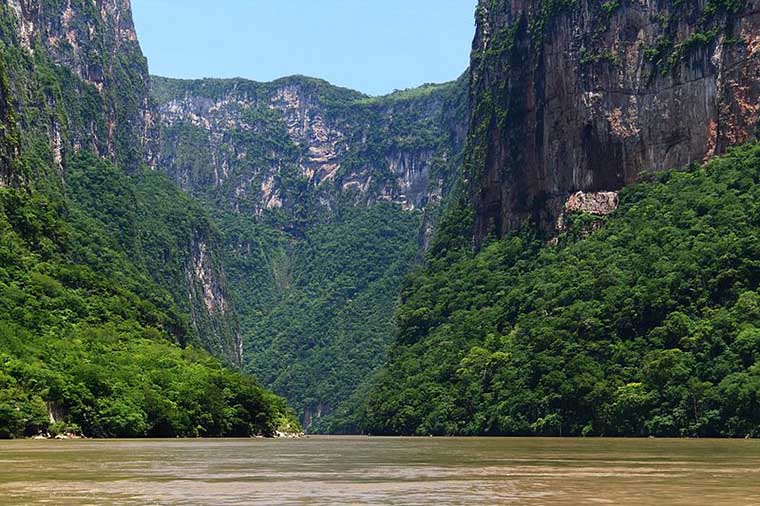
Sinkhole Canyon (Photo: Jan Harenburg, Wikimedia Commons)
Other tours in the surrounding area involve the El Chiflón Waterfalls or a visit to the ruins of Palenque. But in this case the round trip is difficult, as there are more than 400 km of road, round trip. This tour is also offered by several agencies in San Cristóbal and costs from 50 dollars. As it was far away and involved waking up very early and returning late at night, I chose not to go and left it for the next time.
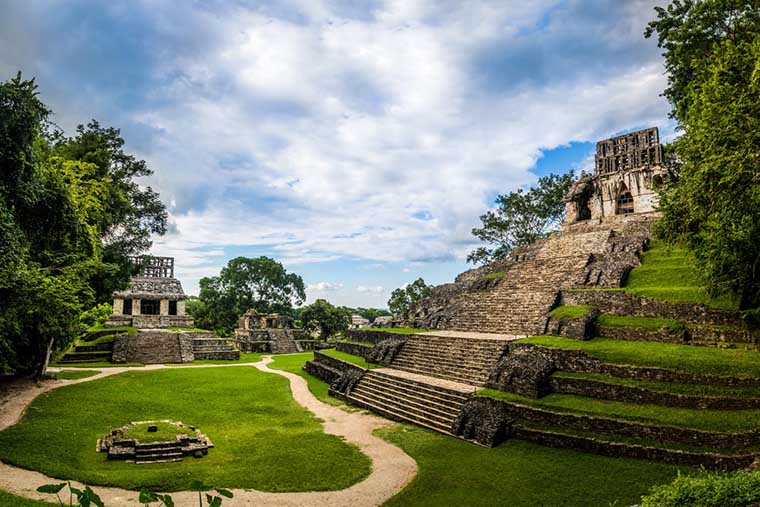
Palenque (Photo: Diego Grandi, shutterstock.com)
A visit to a Zapatista camp, a revolutionary movement that marked the 90s, taking San Cristóbal and thus attracting worldwide attention, is another possible program. And there is, of course, the trip to Chamula, which is unmissable.
Read too: What is it like to visit a Zapatista community near San Cristóbal de las Casas
When to go
The rainy season starts in May and lasts until September, with the rainiest months being June and September. I went in June and saw this, with almost always cloudy days and occasional rain. It didn’t interfere with the trip, but we chose not to take the boat trip through the canyon. Between November and April there is practically no rain. As San Cristóbal is more than two thousand meters above sea level, temperatures are generally mild. Stay at least three nights and three days to see everything at your leisure.
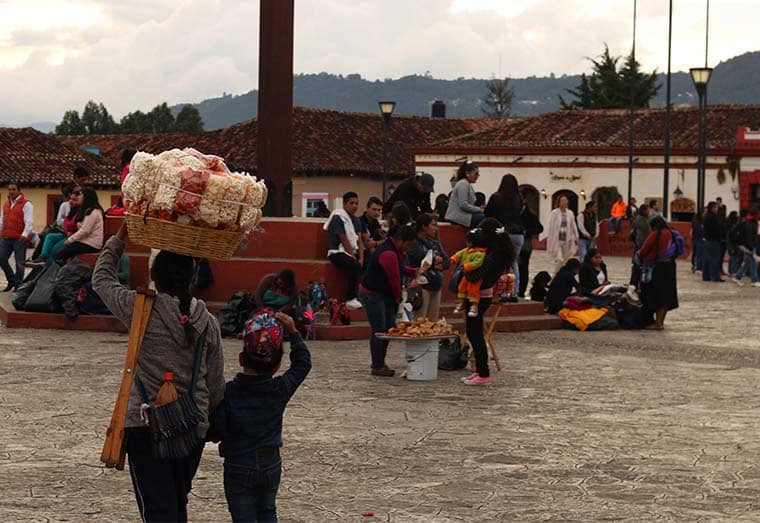
Peace Square
Where to Eat in San Cristóbal de las Casas
Eating well is the best thing you can do in San Cris – even better than wandering aimlessly around the city. And have no doubt: run to La Lupe Cocina de Maíz y de Agave. This was, without exaggeration, one of the best restaurants we have been to in Mexico. The highlight is a table full of spices, from coriander to various peppers, available to customers. A good meal there, with a drink, costs between 200 and 250 pesos. The restaurant is located on Calle Real de Guadalupe, on the pedestrian-only section, nº 23.
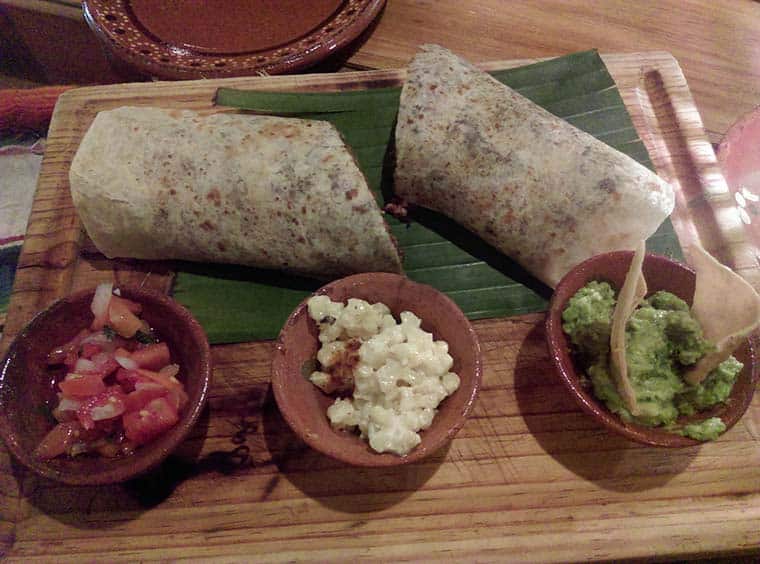
On the same street are La Viña del Bacco (n°13), which has glasses of wine at great prices and serves complimentary popcorn tapas; and La Artesanal (n°7), a good option for those who want to try Mexican beers. For breakfast, which in Mexico is not always included in hotel rates, a good alternative is Namandi, located at Av. Diego de Mazariegos, 16. They also serve lunch and dinner, but breakfast was By far the best meal at the establishment.
El Caldero is a small restaurant that is almost always crowded. The menu features some of the most typical Mexican dishes, all at very fair prices. It is on Calle Insurgentes, 5A.
See too: Mexican food: typical dishes of the country
How to get to San Cristobal de las Casas
The nearest airport is in Tuxtla Gutiérrez, the capital of Chiapas. Therefore, those arriving by plane need to travel a distance of almost 80 kilometers to San Cristóbal de las Casas. Ado, the most important transport company in Mexico, offers transfers between the airport and the San Cris bus station, which is close to the city center. Book in advance, as tickets tend to sell out – it happened to me. The trip costs 242 pesos each way. It is possible to book online, but you can also buy it at the company store, on Calle Real de Guadalupe.
A taxi between San Cristóbal de las Casas and Tuxtla Gutiérrez Airport costs between 600 and 800 pesos. It’s good to negotiate with the taxi driver. Finally, it’s not worth taking the bus to Tuxtla, the city. Even though it is cheaper, you will need to take another transport from there, as the airport is 30 kilometers from the center. When I was in San Cristóbal de las Casas, in June 2017, there were no Uber or other transport apps.
It is also possible to reach San Cris by bus, from several Mexican cities.


